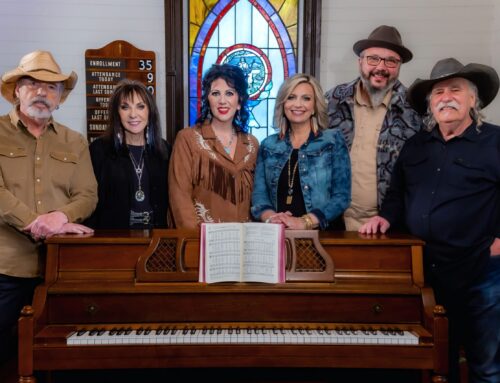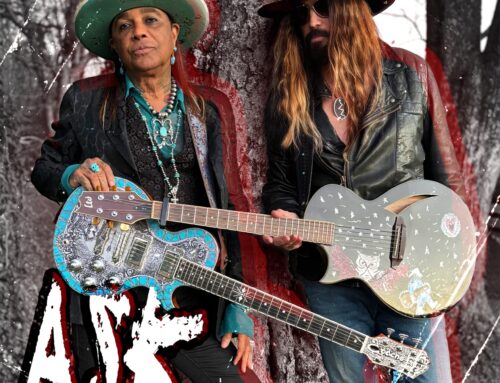NASHVILLE, Tenn. – Whisperin’ Bill Anderson‘s prolific songwriting has been recognized with membership into the Country Music Hall of Fame, Songwriters Hall of Fame and Grand Ole Opry and awarded him with more than 50 BMI Awards, three CMA Awards and two ACM Awards. Anderson earned a spot in history as the only songwriter in history to chart country songs in seven consecutive decades. Now, the National Recording Registry is recognizing Anderson’s songwriting as “Once a Day,” recorded by Connie Smith, joins other groundbreaking sounds of history and culture in the National Recording Registry of the Library of Congress. “Once A Day” is being inducted alongside Louis Armstrong’s “When the Saints Go Marching In,” Labelle’s “Lady Marmalade,” Nas’ “Illmatic,” Kool & the Gang’s “Celebration,” and Kermit the Frog’s “The Rainbow Connection.”
“I had the honor of performing at the Library Of Congress in 2015, and while I was there I was privileged to get to see some of the songs housed in the National Recording Registry,” shared Anderson. “I saw songwriter names like George Gershwin and Irving Berlin, and now to think that my name will be there alongside those legendary composers is mind-boggling. I am thrilled that Connie Smith’s record and my little three-chord country song …written in the front seat of my car at a four-way stop sign in the Nashville suburbs…is being honored in such a remarkable fashion.”
Librarian of Congress Carla Hayden today named 25 recordings as audio treasures worthy of preservation for all time based on their cultural, historical or aesthetic importance in the nation’s recorded sound heritage.
“The National Recording Registry will preserve our history through these vibrant recordings of music and voices that have reflected our humanity and shaped our culture from the past 143 years,” Hayden said. “We received about 900 public nominations this year for recordings to add to the registry, and we welcome the public’s input as the Library of Congress and its partners preserve the diverse sounds of history and culture.”
The recordings most recently selected for the National Recording Registry bring the number of titles on the registry to 575, representing a small portion of the national library’s vast recorded sound collection of nearly 3 million items.
“Once a Day” — Connie Smith (1964) (single)
Connie Smith has been called one of the most underrated vocalists in country music history. And she’s greatly admired by her peers; Dolly Parton once said, “There’s only three real female singers: Barbra Streisand, Linda Ronstadt, and Connie Smith. The rest of us are only pretending.” Smith’s rise to that level of admiration began with her very first single, “Once a Day,” written by Anderson who was already successful, both as a singer and a songwriter, when he heard Smith at a talent contest. He helped her get a recording contract and, for her first session, wrote “Once a Day,” an achingly sad song about a jilted woman who misses her lover only “once a day, every day, all day long.” Recorded at RCA’s famous Studio B in Nashville, Smith was backed by session musicians and members of Anderson’s band, The Po’ Boys, including one new player, steel guitarist Weldon Myrick, who would go on to become a Nashville legend himself. Producer Bob Ferguson wanted the steel guitar to be right up front and Myrick delivered, so much so that Smith credits Myrick with “creating the Connie Smith sound.” “Once a Day” was Connie Smith’s biggest hit and became her signature song.
Under the terms of the National Recording Preservation Act of 2000, the Librarian of Congress, with advice from the National Recording Preservation Board, selects 25 titles each year that are “culturally, historically, or aesthetically significant” and are at least 10 years old. More information on the National Recording Registry can be found at loc.gov/programs/national-recording-preservation-board/about-this-program/. The public may nominate recordings for the Registry here.
Some registry titles have already been preserved by the copyright holders, artists or other archives. In cases where a selected title has not already been preserved, the Library of Congress Packard Campus for Audio Visual Conservation works to ensure that the recording will be preserved by some entity and available for future generations. This can be either through the Library’s recorded-sound preservation program or through collaborative ventures with other archives, studios and independent producers.
The Packard Campus is a state-of-the-art facility where the nation’s library acquires, preserves and provides access to the world’s largest and most comprehensive collection of films, television programs, radio broadcasts and sound recordings (loc.gov/avconservation/). It is home to more than 7 million collection items.
The Library of Congress is the world’s largest library, offering access to the creative record of the United States — and extensive materials from around the world — both on-site and online. It is the main research
2020 National Recording Registry
1. Edison’s “St. Louis tinfoil” recording (1878)
2. “Nikolina” — Hjalmar Peterson (1917) (single)
3. “Smyrneikos Balos” — Marika Papagika (1928) (single)
4. “When the Saints Go Marching In” — Louis Armstrong & his Orchestra (1938) (single)
5. Christmas Eve Broadcast–Franklin D. Roosevelt and Winston Churchill (December 24, 1941)
6. “The Guiding Light” — Nov. 22, 1945
7. “Odetta Sings Ballads and Blues” — Odetta (1957) (album)
8. “Lord, Keep Me Day by Day” — Albertina Walker and the Caravans (1959) (single)
9. Roger Maris hits his 61st homerun (October 1, 1961)
10. “Aida” — Leontyne Price, et.al. (1962) (album)
11. “Once a Day” — Connie Smith (1964) (single)
12. “Born Under a Bad Sign” — Albert King (1967) (album)
13. “Free to Be…You & Me” — Marlo Thomas and Friends (1972) (album)
14. “The Harder They Come” — Jimmy Cliff (1972) (album)
15. “Lady Marmalade” — Labelle (1974) (single)
16. “Late for the Sky” — Jackson Browne (1974) (album)
17. “Bright Size Life” — Pat Metheny (1976) (album)
18. “The Rainbow Connection” — Kermit the Frog (1979) (single)
19. “Celebration” — Kool & the Gang (1980) (single)
20. “Richard Strauss: Four Last Songs” — Jessye Norman (1983) (album)
21. “Janet Jackson’s Rhythm Nation 1814” — Janet Jackson (1989) (album)
22. “Partners” — Flaco Jiménez (1992) (album)
23. “Somewhere Over the Rainbow”/”What A Wonderful World” — Israel Kamakawiwo’ole (1993) (single)
24. “Illmatic” — Nas (1994) (album)
25. “This American Life: The Giant Pool of Money” (May 9, 2008)
For more information on Bill Anderson visit BillAnderson.com or follow him on Facebook, Twitter and Instagram.
ABOUT BILL ANDERSON:
Country Music Hall of Famer and Grand Ole Opry titan Bill Anderson is the rare songwriter whose first major label cut went to No. 1 on the charts, was named Song of The Year and sparked a writing career that is currently in its seventh decade. The song, “City Lights,” was written when Anderson was a 19-year old Georgia disc jockey and became a career-defining hit for Ray Price in 1958. The song opened doors for him in Nashville, leading him to signing with BMI and Tree Publishing. Anderson was far from a one-hit wonder. He followed “City Lights” with country standards like “Tips Of My Fingers,” the GRAMMY-nominated “Once A Day,” “Saginaw, Michigan,” “That’s What It’s Like To Be Lonesome,” “I Missed Me,” “Cold Hard Facts Of Life,” which earned him another GRAMMY nomination, “Mama Sang A Song,” the crossover smash, “Still,” and countless others. He was voted country Songwriter of the Year six times during his first decade in Music City. His success continued into the 1970’s with award-winning hits like “Slippin’ Away,” “The Lord Knows I’m Drinking,” “I May Never Get To Heaven,” and the disco-flavored, “I Can’t Wait Any Longer.” The 1980’s saw Anderson’s chart-topping career take a hiatus as he became a TV network game show host, spokesman for a national restaurant chain and a nonstop touring Grand Ole Opry performer. In the 1990’s he came roaring back with a vengeance, however, as he seriously turned to co-writing for the first time. Inducted into the Country Music Hall of Fame in 2001, his collaborations with the newer generation of Nashville tunesmiths resulted in hits like “Wish You Were Here,” the GRAMMY-nominated “Two Teardrops,” “A Lot Of Things Different,” for Kenny Chesney, “Which Bridge To Cross (Which Bridge To Burn),” for Vince Gill and two CMA Song Of The Year trophies for “Whiskey Lullaby,” with Brad Paisley and Alison Krauss and George Strait’s “Give It Away,” in 2005 and 2007 respectfully. He continues to write today with songs like Brad Paisley’s “Dying To See Her.” For more information, visit BillAnderson.com.





